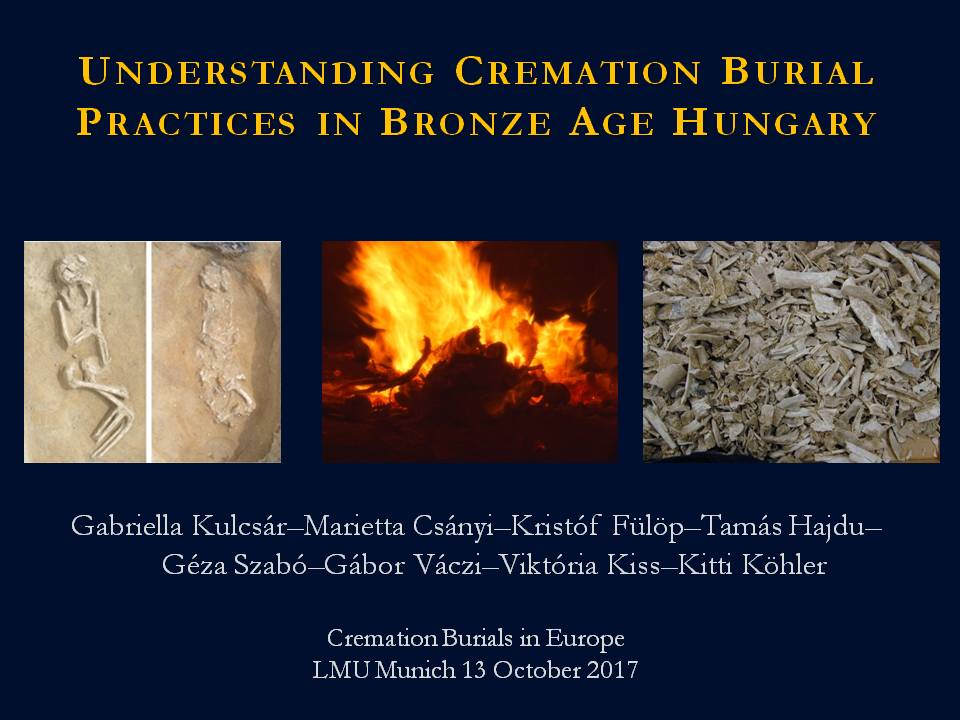Cremation burials in Europe between the 2nd mill. B.C. and the 4th c. A.D. – an international archeological and anthropological conference in Munich
The ArchaeoBioCenter of the Ludwig-Maximilian University in Munich organized a conference between 12 and 14 October 2017, which focused on discussing the results of the DFG project investigating the Bronze and Iron Age cultural relationships on both sides of the Alps (Transalpine Mobility and Cultural Transfer) and on the investigation of cremation burials observed in most part of Europe in the Bronze Age.
The participants have analyzed several aspects of the custom of cremation of various Bronze and Iron Age cultures from the present-day England to the Netherlands and Greece: where and how did the cremation process take place, at what temperature did the bones burn, how were the human remains placed in the grave (in urns, like the present-day custom, or they were scattered at the bottom of the grave). Examination of burned bones requires continuous development of specialized methods, in the knowledge of which researchers can gain many information about the nutrition and possible migration of the cremated individuals (based on stable isotope analysis), the time of cremation (by the dating of bioapatite, the inorganic ingredient remaining in the burned bones), or even the wood species used for cremation (by anthrachological analysis). Accordingly, the lectures concerned a number of methodological questions.
An overview of the data available on the Bronze Age cremation ritual (which was present for about two thousand years in the territory of present-day Hungary) was achieved through extensive professional cooperation. Our lecture summarized the analytical results of the remains of thousands of individuals from the Bell Beaker to the Urnfield Period.

Gabriella Kulcsár, Marietta Csányi, Kristóf Fülöp, Tamás Hajdu, Géza Szabó, Gábor Váczi, Viktória Kiss, Kitti Köhler
Understanding cremation burial practices in Bronze Age Hungary
Cremation of dead bodies was a very common practise in the Carpathian Basin during the early, middle and late phases of the Bronze Age. The scientific value of cremated remains were undervalued due to the microfragmentation of human bonest that provide only limited bioanthropological information. Besides, applying the most careful excavation processes, however, archaeologists sometimes face with the low average weight of the cremated bones that seems to indicate a possible selection of human remains for the final deposition. Our paper will present weight and other detailed bioarchaeological analysis of ashes from the Early, Middle and Late Bronze Age Hungary in order to collect data of burial practices and selected deposition of the deceased body. Our presentation provides new results of the burial practices and dealing with cremated remains from Hungary during the nearly two thousand-year-long Bronze Age period (2600-800 BC).
See the program of the conference here.








